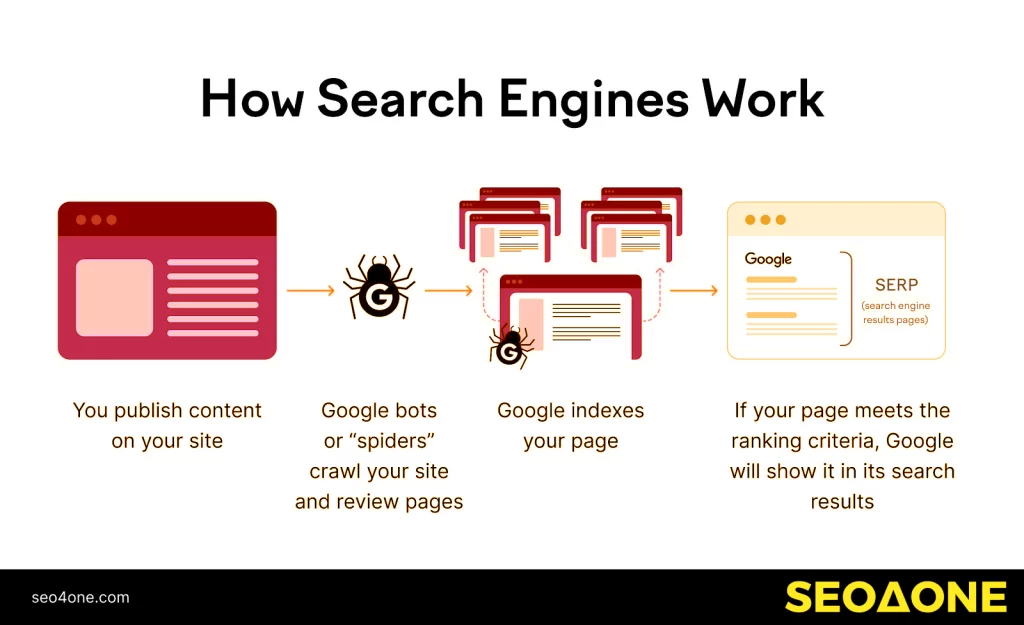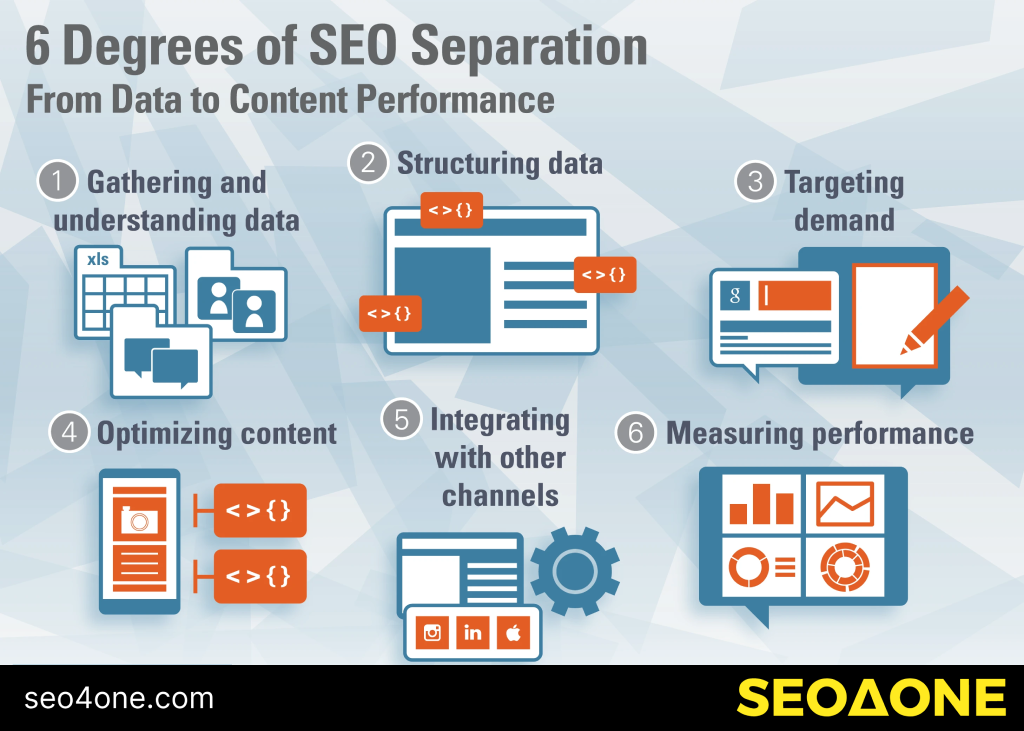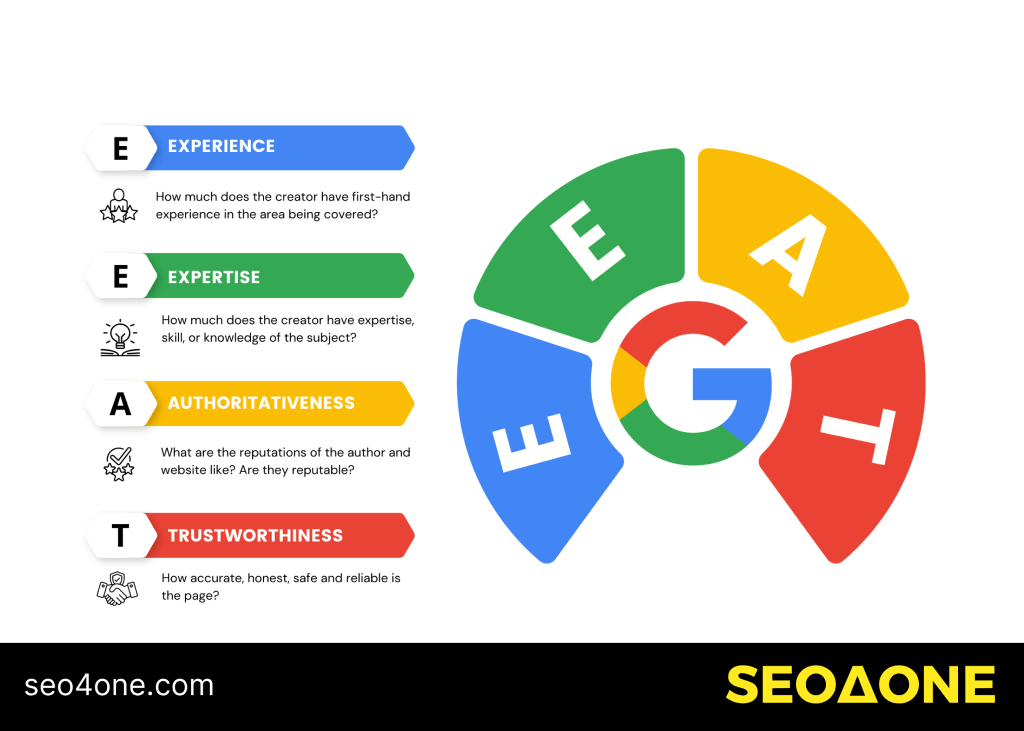Initial Site Crawl & Profiling
This part of the plan focuses on the initial site crawl, profiling, and categorization of website content:
Crawl Site, Build Sub Folder List
This step involves using a web crawling tool or bot to visit all pages of your website. The objective is to index all the content and create a list of subfolders that represent the website’s structure.
Reiteration of GSC Sub Folder Click Performance
Reiterate the performance data from Google Search Console (GSC) for the subfolders. Analyze the click-through rates (CTR) and other performance metrics to identify areas that require attention.
Reiteration of URL Groupings (Perf, Good, Fair, Weak, Dead)
Categorize the crawled URLs into groups based on their performance and quality:
- Performance (Perf): Pages that are doing exceptionally well in terms of traffic and engagement.
- Good: Pages that perform satisfactorily but have room for improvement.
- Fair: Pages with moderate performance but potential for optimization.
- Weak: Pages that underperform and require attention.
- Dead: Pages that no longer serve a purpose or receive traffic.
This initial profiling and categorization provide a foundation for content and SEO optimization efforts on your website.
The subsequent sections in your plan appear to address strategies and actions related to each of these content categories (Dead, Weak, Fair, Good/Performance), duplicate content checks, plagiarism checks, E-A-T (Expertise, Authoritativeness, Trustworthiness) content evaluations, and more. It’s a thorough plan for managing and optimizing website content.

Dead Content
It seems like you’re discussing various topics related to content management, SEO, and website optimization. Let me provide an overview of each of the topics you mentioned:
- Overview of Dead Content: Dead content refers to web pages or content on a website that no longer serves a purpose or receives traffic. These pages can be obsolete, outdated, or irrelevant. Managing dead content is crucial for maintaining a healthy and user-friendly website.
- Recrawl with XPATH for Authors & Dates: XPATH is a language used to navigate XML documents. Recrawling with XPATH for authors and dates likely refers to a process of extracting author information and publication dates from web pages using XPATH. This information can be useful for content management and SEO purposes.
- Content to Cull vs. Blocking vs. Renovation: These are strategies for dealing with outdated or low-value content on a website:
- Content Culling: Removing or deleting irrelevant content.
- Blocking: Preventing search engines from indexing or crawling specific pages.
- Content Renovation: Updating or improving existing content to make it relevant and valuable.
- Content Renovation & Metric Improvements: Content renovation involves updating existing content to improve its quality, relevance, and SEO performance. Metric improvements may include factors like increased organic traffic, higher engagement, and better search engine rankings as a result of these updates.
- Dead Pages with Links / Links of Value: Dead pages with valuable links refer to web pages that no longer exist but contain backlinks from other websites. Managing these dead pages involves either redirecting them to relevant content or contacting the linking sites to update the links to live pages.
- Query Counts vs. Internal Links vs. Age vs. NLP vs. Intent vs. External Links: These are factors considered in SEO and content optimization:
- Query Counts: How frequently specific search queries are used.
- Internal Links: Links within your own website that connect related content.
- Age: The age of web content, with fresh content often ranking higher.
- NLP (Natural Language Processing): Analyzing the content using language models to improve relevance.
- Intent: Understanding and optimizing for user search intent.
- External Links: Backlinks from other websites that can impact search engine ranking.
To effectively manage your website’s content and SEO, it’s important to consider all these aspects and develop a well-rounded strategy that aligns with your goals and the needs of your audience.
Weak Content
This section of your plan focuses on dealing with weak content on your website:
- Overview of Weak Content:
- Begin by identifying and defining what constitutes weak content. Weak content may have low traffic, engagement, or relevancy, and it’s important to understand the characteristics of such content on your website.
- Content to Cull vs Blocking for Weak Pages:
- Decide whether to cull (remove) or block weak pages. Removing weak content may improve the overall quality of your site. Blocking can prevent search engines from indexing or crawling these pages, which might be appropriate for certain situations.
- Content Renovation & Metric Improvements:
- For weak content that has potential, consider renovating it. This involves updating and improving the content to make it more relevant and engaging. Monitor metrics such as traffic, engagement, and rankings to measure improvements.
- Weak Pages with Links / Links of Value:
- Identify weak pages that have incoming links from other websites. Determine the value of these links and assess whether it’s possible to redirect them to stronger pages or contact the linking sites for updates.
- Weak Content due to Decay (Negative Trajectory):
- Content can become weak over time due to various factors, such as outdated information or changing search algorithms. Analyze why certain content is on a negative trajectory and develop strategies to reverse this trend.
- Query Counts vs Internal Links vs Age vs NLP vs Intent vs EXT Links:
- Consider multiple factors when addressing weak content:
- Query Counts: Assess how frequently the content is being searched for.
- Internal Links: Evaluate the internal linking structure to improve visibility.
- Age: Content age can affect its relevance and performance.
- NLP (Natural Language Processing): Use NLP techniques to enhance the content’s quality and relevance.
- Intent: Ensure that the content aligns with user search intent.
- EXT Links (External Links): Identify opportunities to acquire valuable external backlinks to strengthen weak content.
- Consider multiple factors when addressing weak content:
By systematically addressing weak content using these strategies, you can work towards improving the overall quality and performance of your website.

Fair Content
This section of your plan focuses on fair content on your website and how to optimize it:
- Overview of Fair Content:
- Start by defining what constitutes fair content. Fair content may not be performing poorly, but it has the potential to perform better. Understanding the characteristics of fair content on your website is essential.
- Capitalizing on Fair Content:
- Explore ways to maximize the potential of fair content to improve its performance and value to your audience.
- CTR Capitalization:
- Optimize click-through rates (CTR) for fair content by refining meta titles, descriptions, and other elements in search engine results to entice more clicks.
- Content Renovation & Metric Improvements:
- Like with weak content, consider renovating fair content. Update and enhance it to make it more engaging and relevant. Monitor metrics, such as traffic and user engagement, to measure improvements.
- IBL Counts (Inbound Links) (Value):
- Assess the quality and quantity of inbound links to fair content. Quality backlinks can significantly boost the performance of these pages. Identify opportunities to acquire valuable inbound links.
- Intent and Query Count Scope:
- Ensure that fair content aligns with user search intent and covers a broad query count scope. By meeting user needs effectively, you can improve its performance.
- Query Counts vs Internal Links vs Age vs NLP vs Intent vs EXT Links:
- Consider several factors when optimizing fair content:
- Query Counts: Analyze how frequently people search for related queries.
- Internal Links: Improve the internal linking structure to enhance the visibility of fair content.
- Age: Content age can influence its performance.
- NLP (Natural Language Processing): Use NLP techniques to improve content quality and relevance.
- Intent: Ensure content aligns with user search intent.
- EXT Links (External Links): Explore opportunities to acquire external backlinks to strengthen fair content.
- Consider several factors when optimizing fair content:
By focusing on these factors, you can effectively improve the performance and value of fair content on your website.
Good & Performance Content
This section of your plan pertains to optimizing and leveraging good and performance content on your website:
- Overview of Good / Performance Content:
- Define what qualifies as good or performance content on your website. This category likely includes pages that are already performing well in terms of traffic, engagement, and rankings.
- Capitalizing on Good / Performance Content:
- Develop strategies to maximize the potential of good and performance content. Even content that is doing well can often be further improved to increase its impact.
- Intent and Query Count Scope:
- Ensure that the content aligns with user search intent and addresses a wide query count scope. This is essential to maintain and enhance its performance.
- IBL Counts (Inbound Links) (Value):
- Assess the quality and quantity of inbound links to your good and performance content. High-quality backlinks can further boost their ranking and visibility. Identify opportunities to acquire more valuable inbound links.
- Using SEO Stack as a Model for Content Optimization/Tracking:
- The SEO Stack model refers to a comprehensive approach to SEO that includes various components and strategies. Utilize this model to optimize and track your content effectively. It typically involves on-page SEO, technical SEO, content optimization, and link-building tactics.
By employing the SEO Stack model and considering the other factors mentioned, you can maintain and enhance the performance of your already good and high-performing content. This ensures that your top content continues to bring value and meets the needs of your audience.
Duplicate Content
This section of your plan addresses the management of duplicate content on your website:
- Duplicate Content Checks (Common):
- Conduct routine checks to identify common instances of duplicate content across your website. Common duplicates might include boilerplate text, repeated meta descriptions, or identical content on different pages.
- Duplicate Content Checks (Page Specific):
- Examine each page individually for potential duplicate content issues. This is a more detailed analysis to identify and address specific instances of duplication on each page.
- Pages with Higher Match %:
- Focus on pages with a higher percentage of content match, as these are more likely to be flagged as duplicate content. Investigate the reasons behind the similarities and whether they are intentional or problematic.
- Duplicate Content Correction:
- Implement corrective actions to address duplicate content issues. This might involve rewriting content, setting canonical tags, or implementing 301 redirects to consolidate similar content.
- GSC Indexing Duplicate Notices:
- Keep a close eye on Google Search Console for duplicate content notices and alerts. Use this information to pinpoint issues and prioritize corrective measures.
- Client Guidance on Avoiding Duplicate Content:
- Provide guidance to clients or content creators on how to avoid creating duplicate content in the first place. This might include best practices for content creation, naming conventions, and proper use of canonical tags.
By systematically addressing duplicate content and establishing preventive measures, you can improve your website’s SEO and ensure that your content is unique and valuable to both users and search engines.
Plagarised Content
This section of your plan addresses the important issue of checking for and dealing with plagiarized content on your website:
- Content Plagiarism Checks:
- Implement a system or use plagiarism detection tools to regularly check your website’s content for plagiarism. This should cover all types of content, including articles, blog posts, images, and any other media.
Plagiarism checks involve:
- Utilizing online plagiarism detection tools: Many online tools and services can scan your content and compare it with a vast database of existing content to identify potential matches or duplicates.
- Reviewing user-generated content: If your website allows users to submit content, consider using moderation and plagiarism checks to ensure that user-generated content is original.
- Content audits: Periodically conduct manual audits of your content to identify potential cases of self-plagiarism or unacknowledged use of external content.
Once plagiarism is identified:
- Contact the responsible party: If someone within or outside your organization is responsible for the plagiarized content, address the issue with them, and take appropriate action.
- Remove or rewrite: In the case of plagiarism, consider removing the plagiarized content or, if appropriate, rewrite it to be original and properly cited.
- Implement prevention measures: Develop guidelines for content creation and make sure all contributors are aware of your policy on plagiarism.
Preventing and addressing plagiarism is crucial not only for ethical reasons but also to maintain the quality and trustworthiness of your website and its content.
E-E-A-T Content Checks
E-A-T (Expertise, Authoritativeness, Trustworthiness) content checks are essential for ensuring the quality and credibility of your website’s content. Here’s a breakdown of the components of E-A-T checks:
- Niche Specific Content Evaluation:
- Evaluate content within the context of your website’s niche or industry. Ensure that the content is relevant, accurate, and up-to-date for your target audience.
- Fact Checking & Source Citation:
- Fact-check all claims, statistics, and information presented in your content. Properly cite credible sources to support your claims and increase the trustworthiness of your content.
- MC (Main Content Checks):
- Focus on the main content of your pages, such as articles, blog posts, or product descriptions. Ensure that this content is high-quality, accurate, and authoritative. Avoid making unsubstantiated claims.
- SC (Supplementary Content Checks):
- Supplementary content includes elements like sidebars, footnotes, or links to related articles. Ensure that these supplementary elements are helpful, relevant, and accurate.
- Authorship / Expertise, Experience, and Credentials:
- If your content has an identifiable author, assess their expertise, experience, and credentials in the field related to the content. Demonstrating the author’s qualifications can enhance E-A-T.
- Authorship:
- Clearly attribute content to specific authors whenever possible. This not only helps with E-A-T but also adds a personal touch to your content, making it more relatable and trustworthy.
E-A-T is a critical factor in SEO and content quality, especially for websites that provide information in sensitive or highly regulated fields. By conducting these checks and ensuring your content aligns with E-A-T principles, you can enhance your website’s authority and trustworthiness, which, in turn, can positively impact your search engine rankings and user trust.

YMYL Content Checks
YMYL (Your Money or Your Life) content checks are crucial, especially for websites that provide information or services that can significantly impact users’ health, finances, or well-being. Here are two key components of YMYL content checks:
- Niche-Specific Content Evaluation:
- Assess the content in the context of your niche or industry, with a focus on topics related to health, finance, or other areas that directly affect users’ lives. Ensure that the content is highly relevant, accurate, and up-to-date.
- Fact Checking & Source Citation:
- Conduct thorough fact-checking for all claims, statistics, and information presented in your YMYL content. Ensure that every statement is supported by credible sources and provide clear source citations. This not only increases the trustworthiness of your content but also ensures that users have access to reputable information.
For YMYL content, the stakes are high, and misinformation can have serious consequences. By rigorously evaluating and citing sources, you help users make informed decisions and establish your website as a reliable source of information in these critical areas. This can improve user trust and the credibility of your website.
MEDIC Content Checks
MEDIC (Medical, Expertise, and Dependability, and Trust) content checks are essential, particularly for websites that provide medical or health-related information. Here are two critical components of MEDIC content checks:
- Niche-Specific Content Evaluation:
- Evaluate the content within the context of your specific medical or health-related niche. Ensure that the content is not only accurate but also highly relevant and up-to-date for your target audience. Medical information evolves, so it’s crucial to provide the latest and most relevant information.
- Fact Checking & Source Citation:
- Perform rigorous fact-checking for all claims, statistics, and information presented in your medical and health-related content. Back every statement with citations from reputable and authoritative sources. Source citations are vital to ensure the content’s credibility and to give users the ability to verify the information.
For MEDIC content, accuracy and trustworthiness are paramount. Incorrect or misleading medical information can have serious consequences for users’ health and well-being. By conducting thorough content checks, you help users access reliable information and establish your website as a trusted source for medical and health-related topics. This is vital in building trust and credibility.
Content Intent Alignment Checks
Content intent alignment checks are important for ensuring that your content aligns with the search intent of users. Here’s a breakdown of the components involved in this process:
- Niche-Specific Content Alignment Checks:
- Evaluate your content within the context of your specific niche or industry. Ensure that the content aligns with the unique needs and interests of your target audience. Content should directly address the topics and issues that matter most to your niche.
- SEO Stack Intent Samples for Key Pages:
- Utilize the SEO Stack model to define and align the intent of key pages with the specific goals of your website. This model typically includes on-page SEO, technical SEO, content optimization, and link-building strategies. Each element should work in harmony to support the overall intent of the page.
- End User Needs Met Assessment:
- Assess whether your content effectively meets the needs of end users. Consider whether the content provides valuable information, answers questions, and addresses the problems or concerns of your target audience.
- Content Prioritization Checklist:
- Develop a checklist to prioritize and organize your content based on its alignment with user intent. Factors to consider might include keyword relevance, user demand, competitive landscape, and business goals.
By conducting these content intent alignment checks, you can ensure that your content is not only well-optimized for search engines but also highly relevant and valuable to your audience. Aligning content with user intent is crucial for delivering a satisfying user experience and achieving your content marketing goals.
Auxiliary Content Checks
Auxiliary content checks are essential to ensure that all aspects of your content contribute to its quality and effectiveness. Here are the components of these checks:
- AI Content Discovery and Review:
- Assess any content generated or assisted by AI (Artificial Intelligence) systems to ensure it aligns with your content goals and maintains quality. Review AI-generated content for accuracy, relevance, and readability.
- Non-Credible Tone of Voice:
- Evaluate the tone of voice used in your content. Ensure it’s professional, authoritative, and appropriate for your niche or industry. Avoid using a tone that may diminish your website’s credibility.
- Non-Credible Writing Style:
- Examine the writing style employed in your content. The writing style should be clear, concise, and easy to understand. Avoid styles that are overly complex, overly casual, or lack the necessary authority.
- Content Dilution Issues:
- Check for content dilution, which can occur when you have too much irrelevant or off-topic information in your content. Ensure that your content stays focused on the main subject matter and provides value to your audience.
- Spelling & Grammar Quality:
- Conduct thorough proofreading to check for spelling and grammar errors. High-quality content should be free of mistakes that can detract from its professionalism and readability.
By addressing these auxiliary content checks, you can maintain the overall quality, credibility, and professionalism of your content, ensuring that it resonates well with your audience and aligns with your website’s goals.
Content Cannibalisation Checks
Content cannibalization checks are crucial for ensuring that multiple pages on your website aren’t competing with each other for the same search queries. Here’s how you can conduct content cannibalization checks:
- Page & Query Exports:
- Export a list of all your website’s pages and the queries they are currently ranking for. This information can often be obtained from tools like Google Search Console.
- VLOOKUP Query to URL to Find 2+ URLs for the Same Query:
- Use spreadsheet software, like Microsoft Excel or Google Sheets, to conduct a VLOOKUP operation. This helps identify instances where multiple URLs are ranking for the same query. You can compare the query data against your page list.
- SERP > Query Evaluation for Cannibalization Profile:
- Analyze the search engine results pages (SERPs) for specific queries where cannibalization might be occurring. Observe which pages are ranking for these queries and whether they share similar content.
- Page Amalgamation / Consolidation:
- If you identify instances of content cannibalization, decide whether to amalgamate (combine) or consolidate (redirect) the competing pages. Combining similar content into a single authoritative page or redirecting one page to another can help eliminate cannibalization issues.
By conducting content cannibalization checks and taking action to address the problem, you can improve your website’s SEO and ensure that each page effectively targets its intended audience without conflicting with others on the same site.

